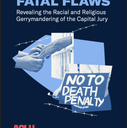
For some Supreme Court Justices and international courts, the extensive time that many inmates spend on U.S. death rows has raised concerns about cruel and unusual punishment. In a recent dissent regarding the execution of Manuel Valle in Florida, Justice Stephen Breyer argued that Valle should not be executed because the 33 years he already spent on death row amounted to a violation of the Eighth Amendment. In an earlier dissent in 1999, Justice Breyer noted that the Constitution did not foresee such delays, “Our Constitution was written at a time when delay between sentencing and execution could be measured in days or weeks, not decades.” Justice Breyer’s concerns are in line with leading international legal opinion regarding the debilitating isolation common to death row. Foreign courts have ruled that living for decades while facing execution is a form of psychological torment. Sarah H. Cleveland, a Columbia law professor and former State Department official, said, “Although concerns about the human impact of excessive time spent on death row have received little attention in this country, the ‘death row phenomenon’ — including lengthy time on death row — has been recognized as inhuman punishment and illegal throughout Europe since the 1980s.” In a 1993 opinion, the British Judicial Committee of the Privy Council wrote, “There is an instinctive revulsion against the prospect of hanging a man after he has been held under sentence of death for many years.” Justice Breyer concluded that a death penalty system that cannot be administered without long delays points to “the difficulty of reconciling the imposition of the death penalty as currently administered with procedures necessary to assure that the wrong person is not executed.” While on the Court, Justice John Paul Stevens also expressed concerns about the cruelty of extended time on death row.
(A. Liptak, “Lifelong Death Sentences,” New York Times, October 31, 2011). See Time on Death Row, U.S. Supreme Court, and International.


